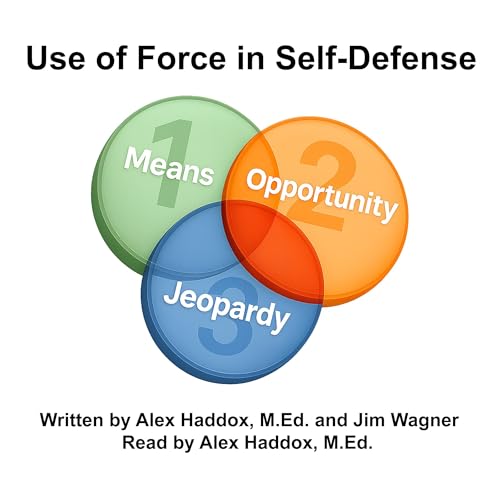
Use of Force in Self-Defense
No se pudo agregar al carrito
Add to Cart failed.
Error al Agregar a Lista de Deseos.
Error al eliminar de la lista de deseos.
Error al añadir a tu biblioteca
Error al seguir el podcast
Error al dejar de seguir el podcast
Obtén 3 meses por $0.99 al mes + $20 de crédito Audible
 Exclusivo para miembros Prime: ¿Nuevo en Audible? Obtén 2 audiolibros gratis con tu prueba.
Exclusivo para miembros Prime: ¿Nuevo en Audible? Obtén 2 audiolibros gratis con tu prueba.
Compra ahora por $6.95
-
Narrado por:
-
Alex Haddox
This stand-alone lesson introduces the student to the essentials in the Use of Force. Example laws from multiple states are referenced throughout the lecture.
Verbal deflection and de-escalation techniques are always the first line of defense and the use of physical force is a measure of last resort. A force-on-force encounter does not end when the act of violence ceases. The psychological impact of a physical attack can last a lifetime. Legal troubles, both civil and criminal, can linger for years or even decades. This lecture offers a brief explanation of generally accepted use of force legal standards.
There are specific rules on the appropriate use of force in making an arrest, personal protection, defense of another, defense of property, and other situations. Security guards are held to the civilian standard which differs from law enforcement or military. The guiding principle for use of force is a “reasonable amount of force.” For comparison, sworn peace officers are allowed to use a “necessary amount of force” to execute their duty. Security guards and private citizens are not peace officers and held to a more restrictive standard.


